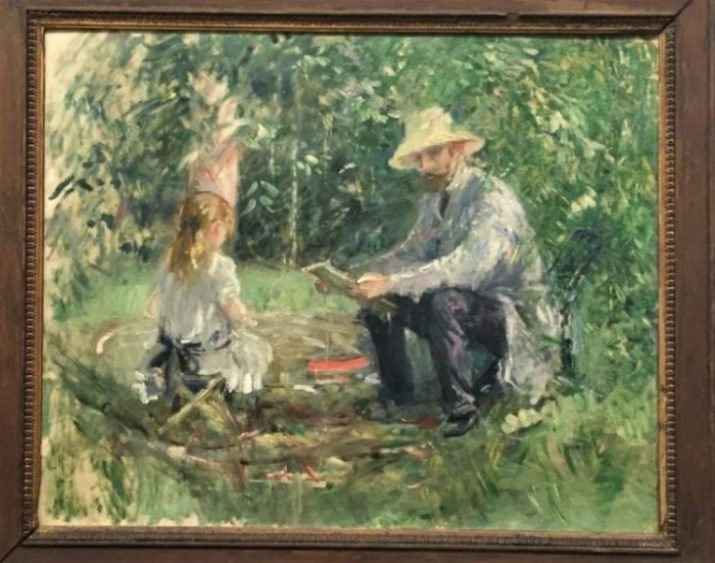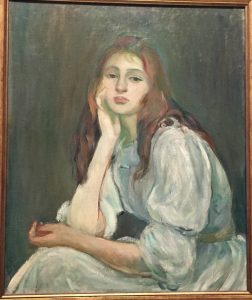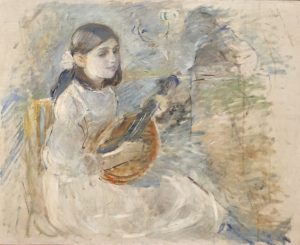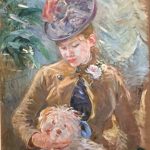
Berthe Morisot, Woman Impressionist. The Barnes Foundation in Philadelphia through January 14, 2019.
Berthe Morisot was accepted as a full-fledged participant in the Impressionist movement. But her name today is less known than those of her friends such as Monet, Renoir and Degas.
They were equal partners in the first Impressionist exhibition, in Paris in 1874. (They called themselves “The Anonymous Society” and didn’t adopt the name “Impressionists” until 1877.) Morisot participated in all but one of the eight Impressionist exhibitions. She missed the fourth show in 1879 due to the birth of her daughter.

So the question is obvious. If this woman was given equal status in the 1870s, why hasn’t her fame remained high in recent years?
On the right, Morisot’s portrait of her daughter Julie, 1894:
When I asked this of Sylvie Patry from the Musée d’Orsay, and Nicole R. Myers from the Dallas Museum of Art, curators of the new exhibition at the Barnes Foundation, I learned a lot. Unlike her friends in the inner circle, Berthe Morisot was a woman of means who didn’t need to sell her paintings to survive.
She was the daughter of a high-level government official and lived in Passy, a fashionable suburb of Paris that’s now part of the wealthy 16th arrondissement. Berthe’s father published a journal advocating liberal artistic trends. Berthe socialized with the Manet family, also members of the upper middle class haute bourgeois, and she married Eugène Manet, the brother of Édouard Manet (who declined to join the Impressionist exhibitions because he wanted to keep his individual identity.) Eugène gave up his own painting career to become a house-husband to his more-accomplished wife.
Rather than sell her paintings, Morisot gave most of them to family and friends. They remained in private hands instead of trading in the marketplace. The most important Impressionist dealer, Paul Durand-Ruel, dealt 1500 Renoirs and a thousand Monets between 1891 and his death in 1922, but only about forty works by Morisot. Her work made its way into museums belatedly. Most of the 68 paintings in this exhibit are on loan from private sources.
Compared to other Impressionists, Morisot’s work has unique qualities: the intimacy of contemporary bourgeois living and family life, and her subtle colors. Her style was sketchlike and gave the impression of being unfinished. Often she placed her subject in an interior space with a balcony, terrace or garden just beyond; she was on the threshold of a wider world. Later in her career she left areas of her canvases bare, to reveal the physical process of painting.
Most of her subjects were female (often her family or her servants) but they never look like objects of men. She didn’t paint nudes. Instead, her women are reading and sewing and bathing and playing musical instruments. The works are arranged chronologically so that they show the artist’s development.
Rizzoli Electa, a division of Rizzoli International Publications, has a gorgeous hard-cover catalog of the exhibition.
In the final Impressionist showing, Morisot contributed eleven paintings plus drawings, pastels, and fans. She outlived both of the Manet brothers but in 1895 Berthe died of influenza at the age of 54. Two of my favorite Morisot paintings are below:
Young Girl With a Dog, 1887; Girl Playing the Mandolin, 1890


For an article about the dealer Durand-Ruel, click here.